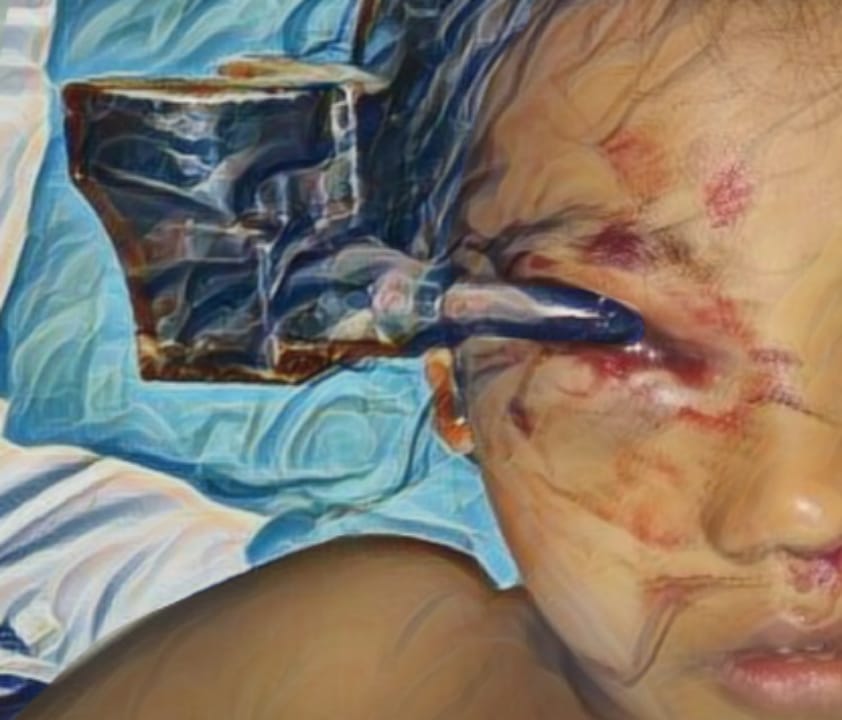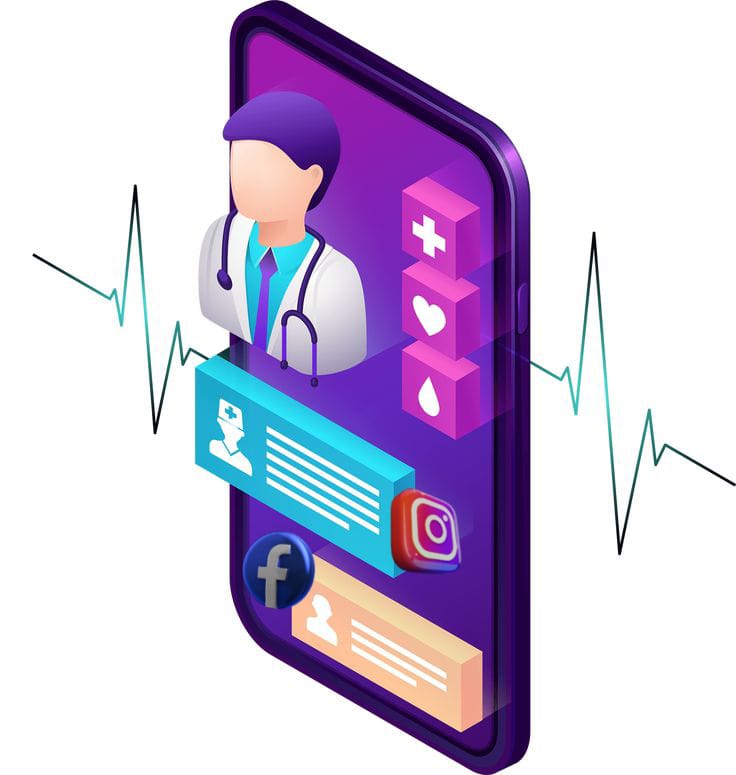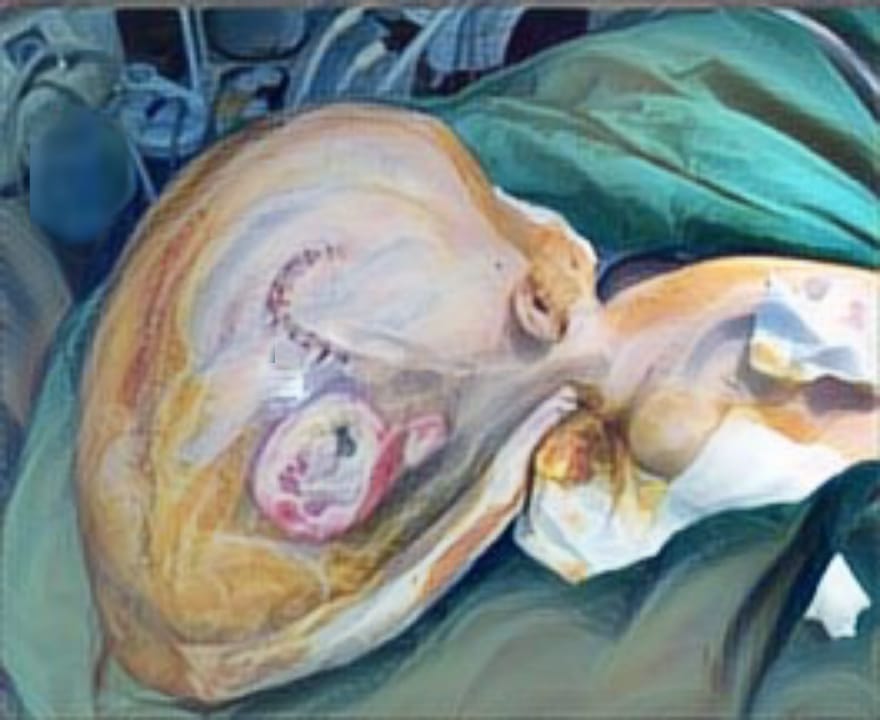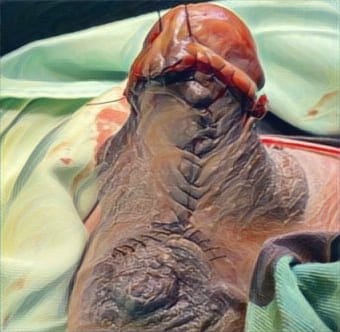REGENERATIVE MEDICINE IN BURN INJURY: A BIBLIOMETRIC ANALYSIS AND LITERATURE REVIEW
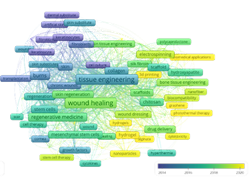
Downloads
Highlights:
- This research analyzes regenerative medicine trends for burn injuries, providing valuable insights into focal points and article characteristics, enhancing understanding of this critical healthcare issue.
- This research analyzes trends in regenerative medicine for burn injuries, highlighting emerging areas like 3D printing, nanotechnology, and photothermal therapy as promising future research directions.
Abstract:
Introduction: Burn injuries represent a significant global health concern, demanding effective management strategies to mitigate their impact. Regenerative medicine offers promising approaches to address burn injury management, utilizing innovative techniques to improve wound healing and tissue regeneration. This paper presents a comprehensive bibliometric analysis and literature review, highlighting trends, hotspots, and article profiles in the application of regenerative medicine for burn injury management, offering valuable insights for future research to enhance burn care.
Methods: A Scopus database search spanning from 2004 to 2024 was conducted using keywords related to regenerative medicine, burn injuries, and wound healing, yielding 602 relevant documents for analysis. Subsequent bibliometric analysis using VOSviewer and Biblioshiny identified key trends and contributors in the field.
Results: The results indicate an increase in research studies over the years, peaking in 2022, followed by a slight decline. Zhang Y emerged as the top researcher, with the United States leading in research output. Researchers primarily focused on four main areas: materials and techniques, injury management, cell-based therapies, and wound healing strategies. Emerging areas such as 3D printing, nanotechnology, and photothermal therapy are gaining interest for future research.
Conclusion: This study provides valuable insights into the evolving landscape of regenerative medicine for burn injury management. Zhang Y's significant contributions and the United States' leading role underscore the global effort in advancing research in this area. The exploration of new technologies like 3D printing and nanotechnology, alongside traditional approaches, signifies the dynamic nature of biomedical research in addressing burn injuries.
Kuznetsova TA, Andryukov BG, Polovov SF, and Gazha AK. Modern aspects of burn injury immunopathogenesis and immuno-biochemical markers of wound healing (review of literature). Klinicheskaia Laboratornaia Diagnostika. 2022. 67(8):451-457. DOI: 10.51620/0869- 2084-2022-67-8-451-457
van Niekerk A. Burn-related injuries. In Oxford Research Encyclopedia of Global Public Health. 2022. DOI:10.1093/ acrefore/9780190632366.013.305
Spiwak R, Sareen S, and Logsetty S. Techniques to assess long-term outcomes after burn injuries. European burn journal. 2022. 3(2): 328-339. DOI: 10.3390/ebj3020028
Wiechman SA. Long-Term Outcomes Following Burn Injuries. Handbook of Burns Volume 2: Reconstruction and Rehabilitation. 2020. 2:15-23. DOI: 10.1007/978-3- 030-34511-2_2
Popp D, Branski LK, and Kamolz P. Long-Term Sequelae of Burn Injury: Current Understanding of Pathophysiology, Therapeutic, and Rehabilitative Options with an Emphasis on Hypertrophic Scarring and Laser Therapy. Burn Care and Treatment: A Practical Guide. 2021. 181-197. DOI:10.1007/978-3-030-39 193-5_14
Mason C and Dunnill P. A brief definition of regenerative medicine. Regenerative Medicine. 2008.3(1):1–5. DOI: 10.2217/17460751.3.1.1
Abdul Kareem,N, Aijaz A, and Jeschke MG. Stem cell therapy for burns: story so far. Biologics: Targets and Therapy. 2021: 379-397. DOI:10.2147/BTT.S259 124
Shpichka A, Butnaru D, Bezrukov EA, Sukhanov RB, Atala A, Burdukovskii, V, et al. Skin tissue regeneration for burn injury. Stem cell research & therapy. 2019. 10:1-16. DOI: 10.1186/s13287-019-1203-3
Agbo FJ, Oyelere SS, Suhonen J, and Tukiainen, M. Scientific production and thematic breakthroughs in smart learning environments: a bibliometric analysis. Smart Learning Environments. 2021.8:1-25. DOI:10.1186/s40561-020 -00145-4
World Health Organization (WHO). Burns. Available from: https://www. who.int/news-room/fact-sheets/detail /burns
Peck MD, Kruger GE, Van Der Merwe A. E, Godakumbura W, and Ahuja RB. Burns and fires from non-electric domestic appliances in low and middle income countries: Part I. The scope of the problem. Burns. 2008. 34(3):303-311. DOI:10.1016/j.burns.2007.08.014
Aslan Baradaran, Edward W Buchel, and Joshua Vorstenbosch. Thermal Burns. (Accessed 23 October 2003). Available from:https://emedicine. medscape.com/article/1278244-overview?form=fpf
Haagsma JA, Graetz N, Bolliger I, Naghavi M, Higashi H, Mullany EC, et al. The global burden of injury: incidence, mortality, disability-adjusted life years and time trends from the Global Burden of Disease study 2013. Injury Prevention. 2016.22(1):3-18. DOI:10.11 36/injuryprev-2015-041616
Church D, Elsayed S, Reid O, Winston B, Lindsay R. Burn wound infections. Clinical microbiology reviews. 2006. 19(2): 403-434. DOI:10.1128/cmr.19.2. 403-434.2006
Colton BN, Nicholas CD, James MH, Michael M, and John GW. Burns: Pathophysiology of Systemic Complications and Current
Management. Journal of Burn Care & Research.2017.38(1): e469–e481. DOI: 10.1097/BCR.0000000000000355
Oryan A, Alemzadeh E, and Moshiri A. Burn wound healing: present concepts, treatment strategies and future directions. Journal of wound care.2017. 26(1):5-19. DOI:10.12968/jowc.2017.2 6.1.5.
Hama R, Reinhardt JW, Ulziibayar A, Watanabe T, Kelly J, Shinoka T. Recent Tissue Engineering Approaches to Mimicking the Extracellular Matrix Structure for Skin Regeneration. Biomimetics. 2023. 8(1):130. DOI:10.33 90/biomimetics8010130
Eming SA, Martin P, and Tomic-Canic M. Wound repair and regeneration: mechanisms, signaling, and translation. Science translational medicine. 2014. 6(265): 265sr6-265sr6. DOI:10.1126/ scitranslmed.3009337
Eming SA, Martin P, and Tomic-Canic M.Wound repair and regeneration: mechanisms, signaling, and translation. Science translational medicine. 2024. 6 (265): 265sr6-265sr6. DOI: 10.1126/ scitranslmed.3009337
Stone II R, Natesan S, Kowalczewski CJ, Mangum LH, Clay NE, Clohessy RM, et al. Advancements in regenerative strategies through the continuum of burn care. Frontiers in pharmacology. 2018.9:672. DOI: 10.3389/fphar.2018. 00672
Kowal S, Kruger E, Bilir P. et al. Cost-Effectiveness of the Use of Autologous Cell Harvesting Device Compared to Standard of Care for
Treatment of Severe Burns in the United States. Adv Ther. 2019. 36:1715–1729. DOI:10.10 07/s12325-019-00961-2
Henry S, Mapula S, Grevious M, Foster KN, Phelan H, Shupp J, et al. Maximizing wound coverage in full-thickness skin defects: a randomized-controlled trial of autologous skin cell suspension and widely meshed autograft versus standard autografting. Journal of
Trauma and Acute Care Surgery.2024. 96(1):85-93. DOI: 10.1097/TA.000000 0000004120
Ramaswamy RSH, Reddy R, Babu NC, and Ashok GN. Stem-cell therapy and platelet-rich plasma in regenerative medicines: A review on pros and cons of the technologies. Journal Oral Maxillofac Pathol.2018. 22(3): 367-374. DOI:10.4103/jomfp.JOMFP_93_18.
Malekzadeh H, Tirmizi Z, Arellano JA, Egro FM, Ejaz A. Application of Adipose-Tissue Derived Products for Burn Wound Healing. Pharmaceuticals. 2023. 16(9):1302. DOI:10.3390/ph16091302
Mao AS and Mooney DJ. Regenerative medicine: Current therapies and future directions. Proceedings of the National Academy of Sciences. 2015. 112(47): 14452-14459. DOI:10.1073/pnas.1508 520112
Gurtner GC, Werner S, Barrandon Y, Longaker MT. Wound repair and regeneration. Nature. 2008; 453 (719 3):314-321.DOI: 10.1038/nature07039
Shevchenko RV, James SL, James SE. A review of tissue-engineered skin bioconstructs available for skin reconstruction. Journal of the royal Society Interface. 2010. 7(43):229-258. DOI:10.1098/rsif.2009.0403
Murphy SV and Atala A. 3D bioprinting of tissues and organs. Nature Biotechnology. 2014. 32(8): 773-785. DOI: 10.1038/nbt.2958
Nuschke A. Activity of mesenchymal stem cells in therapies for chronic skin wound healing. Organogenesis. 2014. 10(1):29-37.DOI: 10.4161/org.27405
Kadam S, Muthyala S, Nair PD, and Bhonde R. Human placenta-derived mesenchymal stem cells and islet-like cell clusters generated from these cells as a novel source for stem cell therapy in diabetes. The review of diabetic studies: RDS.2010. 7(2):168-182. DOI: 10.1900/RDS.2010.7.168
Nguyen MK and Alsberg E. Bioactive factor delivery strategies from engineered polymer hydrogels for therapeutic medicine. Progress in polymer science. 2014. 39(7): 1235-1265.DOI:10.1016/j.progpolymsci.2013.12.001
Kohlhauser M, Tuca A, and Kamolz LP. The efficacy of adipose-derived stem cells in burn injuries: a systematic review. Cellular &
Molecular Biology Letters.2024.29(1):10. DOI:10.1186/s1 1658-023-00526-w
Deng X, Gould M, and Ali MA. A review of current advancements for wound healing: Biomaterial applications and medical devices. Journal of Biomedical Materials Research Part B: Applied Biomaterials. 2022. 110(11): 2542-257 3. DOI:10.1002/jbm.b.35086
Annabi N, Tamayol A, Uquillas JA, Akbari M, Bertassoni L E, Cha C, et al. 25th anniversary article: Rational design and applications of hydrogels in regenerative medicine. Advanced materials. 2024. 26(1): 85-124. DOI:10.10 02/adma.201303233
Lee K, Silva EA, and Mooney DJ. Growth factor delivery-based tissue engineering: general approaches and a review of recent developments. Journal of the Royal Society Interface. 2011. 8(55): 153-170.DOI:10.1098/rsif.2010. 0223
Boateng JS, Matthews KH, Stevens HN, Eccleston GM. Wound healing dressings and drug delivery systems: A review. Journal Pharmacy Science. 2008.97(8): 2892-2923. DOI: 10.1002/jps.21210
Vader P, Mol EA, Pasterkamp G, and Schiffelers RM. Extracellular vesicles for drug delivery. Advanced drug delivery reviews. 2016. 106: 148-156. DOI: 10.1016/j.addr.2016.02.006
Mathew V, Dafydd O. Visscher, Paul P. M. van Zuijlen, Anthony A, and James JY, Skin bioprinting: the future of burn wound reconstruction?, Burns & Trauma.2019.7:s41038–019–0142–7. DOI:10.1186/s41038-019-0142-7
Brown C, et al. (2023). Microfluidic devices for targeted drug delivery in burn wound care: current trends and future perspectives. Expert Review of Medical Devices. 20(3):243-259.
Manita PG, Garcia-Orue I, Santos-Vizcaino E, Hernandez RM, and Igartua M. 3D Bioprinting of Functional Skin Substitutes: From Current Achievements to Future Goals. Pharmaceuticals. 2021. 14(4):362. DOI:10.3390/ph140403 62
Alapan Y, Hasan MN. Shen R. and Gurkan UA. Three-Dimensional Printing Based Hybrid Manufacturing of Microfluidic Devices. J. Nanotechnol. Eng. Med. 2015. 6:021007.
Na R. and Wei T. Recent perspectives of nanotechnology in burn wounds management: a review. Journal of Wound Care. 2021. 30(5): 350-370. DOI:10.12968/jowc.2021.30.5.350
Bolouki N, Hsu YN, Hsiao YC, Jheng PR, Hsieh JH, Chen HL, et al. Cold atmospheric plasma physically reinforced substances of platelets-laden photothermal-responsive methylcellulose complex restores burn wounds. International Journal of Biological Macromolecules. 2021. 192: 506-515. DOI:10.1016/j.ijbiomac.2021. 09.168
Knoepfler PS. Deconstructing stem cell tumorigenicity: a roadmap to safe regenerative medicine. Stem cells. 2009. 27(5):1050-1056. DOI:10.1002/stem.3 7
King NM and Perrin J.Ethical issues in stem cell research and therapy. Stem Cell Research & Therapy. 2014. 5:1-6. DOI:10.1186/scrt474
Michèle C, Alexis L, Corinne S, Laurent W, Jeanne-PS, Murielle M, et al. Burn Center Organization and Cellular Therapy Integration: Managing Risks and Costs, Journal of Burn Care & Research.2021. 42(5): 911–924. DOI:10. 1093/jbcr/irab080
Wong RSY, Maran S, and Goh BH. Current Guidelines, Challenges, and Future Recommendations for Regulation of Stem Cell Research and Therapy: A Commentary. Cytotherapy. 2024. DOI:10.1016/j.jcyt.2024.04.076
Bauer SR.Stem cell-based products in medicine: FDA Regulatory Considerations. Handbook of stem cells. 2004. 805. DOI:10.1016/B978-012436 643-5/50163-2
Tingting Q. Regenerative medicine with substantial promises but challenges in market access: strategies to accommodate such innovative products within the current healthcare system. 2021. PhD Thesis. Aix-Marseille.
Bubela T, McCabe C, Archibald P, Atkins H, Bradshaw SE, Kefalas P,et al. Bringing regenerative medicines to the clinic: the future for regulation and reimbursement. Regenerative medicine. 2015. 10(7): 897-911. DOI: 10.2217/rme.15.51
Copyright (c) 2024 Santi Devina, Naufal A. Rahman, M. Yusuf Brilliant P, Godwin Emeka Ozokolie, Lanre Peter Daodu,Shreya Pandey

This work is licensed under a Creative Commons Attribution-ShareAlike 4.0 International License.
JURNAL REKONSTRUKSI DAN ESTETIK by Unair is licensed under a Creative Commons Attribution-ShareAlike 4.0 International License.
- The journal allows the author to hold copyright of the article without restriction
- The journal allows the author(s) to retain publishing rights without restrictions.
- The legal formal aspect of journal publication accessbility refers to Creative Commons Attribution Share-Alike (CC BY-SA)












